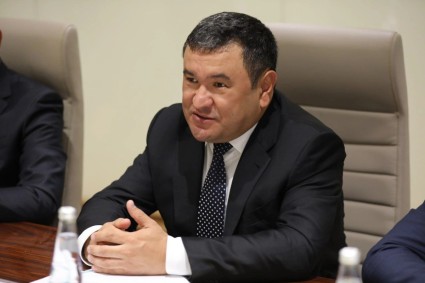Uzbekistan's public debt may rise to $45 billion in 2025, the Ministry of Economy and Finance said in a report. In 2024, the public debt is expected to reach $39.7 billion, or 35.5% to GDP. Next year, the figure will grow by 13.3% to $45 billion, or 36.4% of GDP. By 2027, the level of public debt may reach $55.9 billion, but with a ratio of 36.7% to GDP, the growth will be insignificant.
At the same time, according to the draft state budget, next year Uzbekistan may attract more loans at the expense of debt. If the limits on attracting external borrowing this year are $5 billion under a state guarantee, then next year - $5.5 billion. Of this amount, $3 billion (currently $2.5 billion) will be used to support the state budget, and $2.5 billion will be used to finance investment projects.
To diversify the government debt portfolio and reduce currency risks, it is planned to set a maximum net volume of government securities issued with the guarantee of Uzbekistan at 30 trillion soums for 2025 (25 trillion soums for 2024).
In addition, to reduce risks for the state budget, it is established that the upper limit on the cost of new public-private partnership projects involving the state's assumption of obligations (purchase or payment) will be $6.5 billion.
Expenditures for government programs at the expense of external debt will reach 18.8 trillion soums (in 2024 - 11.8 trillion soums).
The share of funds contributed to repay the national debt in the consolidated budget (including the state budget, budgets of state target funds, extra-budgetary funds of budgetary organizations and funds of the Reconstruction and Development Fund) is expected to increase from 7.5% to 9.6%.
It is planned to contribute 46.08 trillion soums from the budget to repay the national debt (at the average annual exchange rate for next year - $3.48 billion), of which 21.1 trillion soums - for interest payments. For comparison: in 2024, it is planned to contribute 32.27 trillion soums ($2.55 billion) to repay the debt, including 16.4 trillion soums for interest payments.
In order to prevent the growth of public debt to support the budget in the medium term, compliance with the budget rule for the consolidated budget deficit (within 3% of GDP) is envisaged. At the same time, it is planned to direct the attraction of external borrowing mainly to highly effective investment projects in order to slow the growth of public debt in relation to GDP.
Private debt
External debt consists of public and private debt. At the end of the first quarter of 2022, private debt amounted to $15.4 billion, and total gross external debt was $43.3 billion.
According to the latest IMF report in July, Uzbekistan's gross external debt reached 61.3% of GDP, or $55.7 billion in 2023.
In the first half of 2024, total external debt amounted to $63.8 billion, according to the Central Bank data.
Standard & Poor’s expects that Uzbekistan's net public debt and external debt will grow faster than their previous forecasts, facilitated by the acceleration of the implementation of energy and infrastructure projects. In their opinion, a constant and uncontrolled increase in the state presence and external debt may pose risks, but analysts believe that the country's budget deficit and current account deficit will decrease in the future after peaking in 2023.
The report also cited the risk that non-state-guaranteed debt from SOEs and PPPs, which amounts to about 8% of GDP in 2023, could crystallize on the government’s balance sheet. State-linked enterprises have significantly increased their borrowing in recent years, especially in foreign currency, to finance energy and infrastructure projects. Analysts say they could face problems repaying this debt if some projects perform worse than expected or if there are management or oversight lapses.











